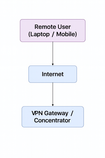Understanding First Hop Redundancy Protocols (FHRP): Ensuring Network Availability
- The Itvue Team
- Aug 19
- 2 min read
Author Ermias Teffera
At ITVue Networks, ensuring network uptime and resiliency is critical for enterprise infrastructures. One of the key technologies we use to prevent single points of failure at the default gateway is First Hop Redundancy Protocol (FHRP). In this blog, we’ll dive deep into FHRP concepts, discuss the main protocols, and provide real-world Cisco examples and diagrams
What is FHRP?
FHRP is a set of protocols designed to provide a redundant default gateway in a network. When the primary router fails, FHRP ensures that another router seamlessly takes over, preventing network outages.
Key benefits:
Redundancy: Users’ traffic is not interrupted if the default gateway fails.
High Availability: Automatic failover without manual intervention.
Load Distribution: Some protocols allow active/active configurations.
Common FHRP Protocols
HSRP (Hot Standby Router Protocol) – Cisco Proprietary
One active router forwards traffic, another is standby.
The virtual IP address is shared between routers.
Failover occurs when the active router stops responding.
VRRP (Virtual Router Redundancy Protocol) – Standardized (RFC 5798)
Similar to HSRP, supports active/backup routers.
Open standard, works across multi-vendor environments.
GLBP (Gateway Load Balancing Protocol) – Cisco Proprietary
Provides active/active load sharing among multiple routers.
Each router handles a portion of client traffic.
How FHRP Works
HSRP Example:

Routers share a virtual IP (e.g., 192.168.1.1).
Clients use this virtual IP as their default gateway.
If Router 1 fails, Router 2 automatically becomes the active router.
Cisco HSRP Configuration Example

priority determines the active router.
preempt allows the higher priority router to take over when it comes back online.
VRRP Example Diagram

Master router handles traffic.
Backup router monitors Master and takes over if Master fails.
Clients still use the virtual IP (e.g., 10.0.0.1).
GLBP Active/Active Diagram

Each router is active for a subset of client traffic.
Provides load balancing in addition to redundancy.
Best Practices
Match FHRP Versions: Ensure all routers use the same protocol version.
Use Preemption Carefully: Enables high-priority routers to regain active status.
Monitor with show standby or show vrrp: Verifies state and status.
Combine with EtherChannel: For uplink redundancy and increased bandwidth.
Document Virtual IPs: Avoid conflicts across VLANs or subnets.
Real-World Application
In a corporate LAN:
Each floor has two distribution routers configured with HSRP.
Access switches use the virtual IP as the default gateway.
Users continue to access the network even if one router fails.
Combining FHRP with EtherChannel and ECMP at the distribution/core layers ensures high availability, load balancing, and minimal downtime.
Conclusion
FHRP protocols like HSRP, VRRP, and GLBP are essential for modern enterprise networks to prevent a single point of failure at the default gateway. Proper implementation guarantees network resiliency, seamless failover, and optimized traffic distribution. At ITVue Networks, we design and deploy robust FHRP solutions alongside EtherChannel and ECMP strategies to ensure maximum uptime and performance for clients.










Comments